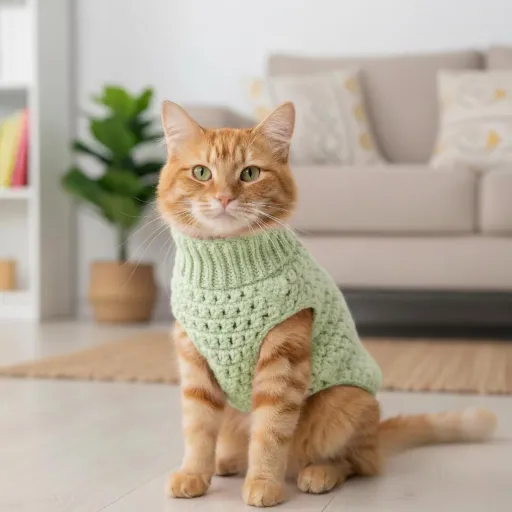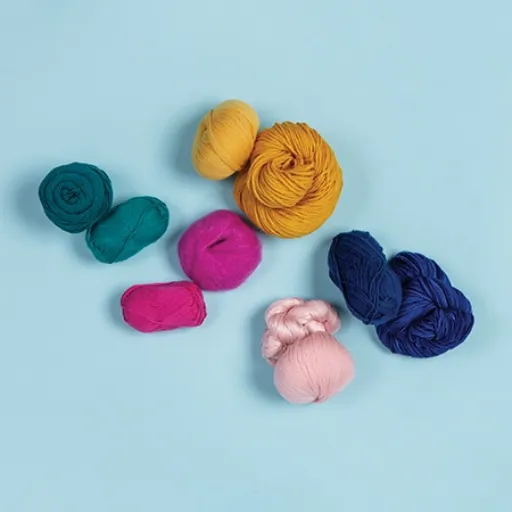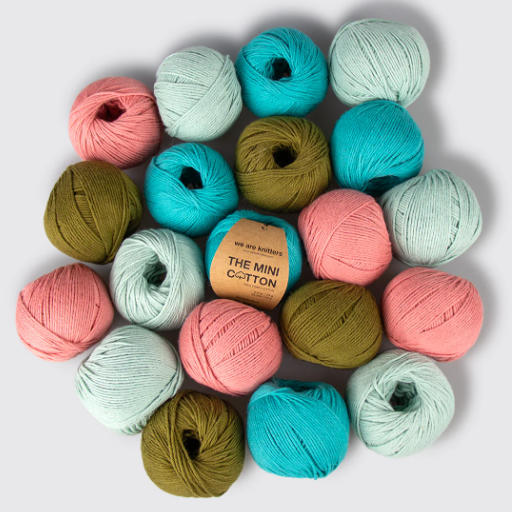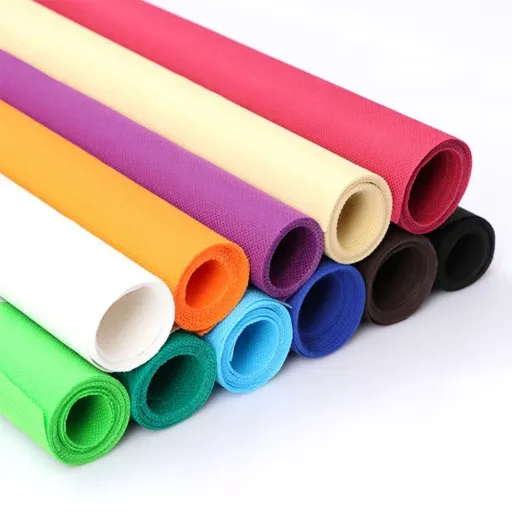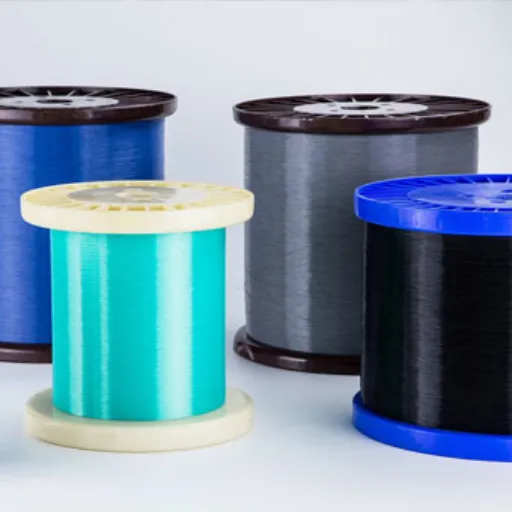Stretchy covered yarn is a significant invention that has revolutionized several sectors, including but not limited to fashion, textile, medical, and industrial manufacturing. Elastic threads with protective outer coverings form a second type of yarn that remains strong and flexible. However, it can bring limitless possibilities in making the material strong, flexible, and easy to use. In this article, we will delve into the details of covered elastic yarn—what its structure comprises, its types, its advantages, and how it innovatively assists in product development. This is a crucial post for textile professionals, designers, and inquisitive individuals, as it explores this subject in depth for their benefit. Let us grasp what distinguishes stretchable covered yarns from other types of yarns.
Understanding Covered Elastic Yarn
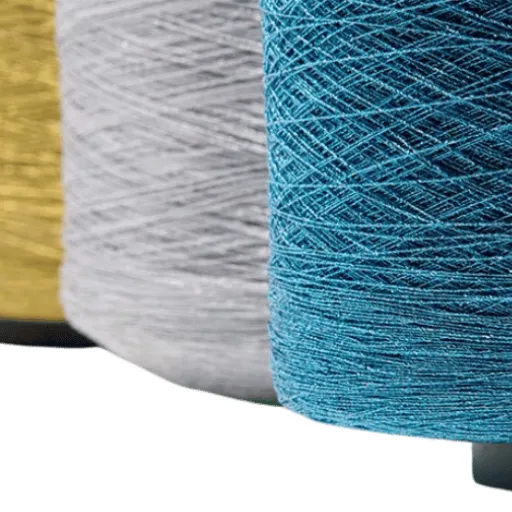
The type of yarn referred to as covered elastic yarn consists of an elastic core, such as spandex or rubber, wrapped with another fiber, either knitted or woven, that covers the inner elastic core. This form of yarn not only offers elongation but also elongation with tension, without structural distortion, in addition to the active use in garments where there is possible movement and deformation of fabrics, as well as any other purposes with significant spirit, like activewear, hosiery, and even the medical dress code, thereby taking advantage of the fact that even upon movement, the shape is not altered.
Key Materials Used in Covered Spandex Yarn
One of the main features of covered elastic yarn is that it consists of a few primary materials. Covered elastic yarn is made from a stretchy core covered in fibers. These will consist of yarn made of any of the following fibers:
- Cotton is soft and breathable, making it a comfortable and natural choice for everyday and sporty clothes.
- Polyester: Polyester offers strength, provides effective moisture management, and is resistant to wrinkles. This is especially true for polyester, due to its widespread use in making sports apparel, also known as active wear.
- Nylon: Lightweight, versatile nylon contributes resilience, smoothness, and resistance to abrasion, making it suitable for hosiery, legwear, and even medical textiles.
- Blends: Fiber mixtures, such as polyester-cotton, and some blends of nylon and cotton are often used to meet specific requirements or special characteristics, for example, stretch, softness, or hard-wearing properties.
Properties of Elastic Yarn: Elasticity, Durability, and Versatility
Highly stretchable, the covered elastic yarn can be pulled to a great length and still return to its original shape. This feature forms the crux of all its applications, right from sportswear to healthcare textiles, where stretchability is key. Moreover, its sturdiness enables the yarn to perform effectively even after use, washing, and exposure to surrounding environmental elements. Another notable feature of elastic yarn is its presence alongside various fibers and materials in different designs, whether to enhance comfort in clothing or strengthen supportive fabrics. This makes elastic yarn highly appealing and thus, a very critical product in the current practice of dynamism in the textile industry.
Applications of Covered Elastic Yarn

There is less use of the covered elastic yarn; however, this is due to its attractive indicators of elasticity and resistance. In particular, certain types of garments, such as active wear, underwear, hosiery, or socks, utilize it in their definition. The overall flexibility and ‘wearability’ are good examples. Moreover, it is frequently used in healthcare textiles, such as compressive apparel, bandaging materials, and orthopedic supports, as these applications require a material that can withstand adequate stretching. It can even be woven into home textiles such as cushion or mattress covers to hold them in place. Such multifunctionality is why it becomes a component for the overwhelming majority of industries.
Fashion Applications: From Hosiery to Activewear
The increased selectivity of customers regarding fashion has intensified demand for functional, multi-purpose clothing. It is manifested in an increase in searches for the following terms: “breathable activewear,” “supportive yarns,” and “clothing made of fashion fabrics,” including where to purchase. From such questions, it is clear that comfort, functionality, and sustainability in fashion wear have become essential aspects. This is also responsible for the heavy incorporation of spandex, which can be mixed up with more common fibres such as cotton or polyester. It is because spandex garments do not restrict movements, yet can remain firm and last for a long time. This aspect is crucial for most products these days, as they often include spandex leggings, spandex bras, thin socks, and even body-shaping gear. The imaginative introduction of classic spandex, featuring cuts that enhance the functionality of these garments, represents a comparatively high level of functionality, which perfectly matches the fashionable aspects of contemporary lifestyles.
Technical Textiles: Innovations in Industrial Applications
The advent of specialized textiles has transformed the landscape of several sectors by introducing substances of a different character, made possible by modern science, to cater to specific purposes. These textiles are manufactured with particular functions or objectives in mind, rather than style and form, and notable examples include healthcare, engineering, motor vehicle, and aviation businesses. For example, in engineering, geotextiles are used to strengthen and increase the bearing capacity of a subgrade. In the medical field, antimicrobial and biodegradable fibers are widely used in attire, such as surgical gowns and masks, as well as in wound dressings. Furthermore, there is progress in the use of fire-retardant cloth materials and firm composite materials for the safety of workers in high-risk jobs. Furthermore, industrial technical fabric innovation is a clear indication of its crucial role in operational and environmental protection, effectiveness, and the delivery of benefits to most of the organization’s activities.
Benefits of Choosing Covered Elastic Yarn

Enhanced Stretch and Recovery
Utilizes covered elastic yarn, which is elastic yarn with a core filament and an outer non-elastic covering, to create canvases that can easily stretch and return to their original form.
Durability
Flexible and Less Demanding Materials for Everyday Use that Few Buyers Already Use.
Comfort
Different types of covered elastic yarn make clothes and accessories more comfortable, as the elasticity is soft and supple.
Versatility
Its use extends to sportswear, medical textiles, and various fashion styles.
Aesthetic Appeal
It is possible to color-covered elastic yarn and make it conform to a fabric as a design element.
Advantages Over Conventional Covered Yarn
Here are a few essential benefits of covered elastic yarn that set it apart from standard, simple covered yarn, and why it is preferred more than ever today. One is that such a system elicits remarkable performance in terms of shear forgetfulness, owing to its ability to maintain both plasticity and strength over time, even through multiple washes. Another benefit is that the use of more advanced machine techniques reduces the hairiness of fabrics, resulting in an improved surface finish and less wear on the fabric. Another benefit of using covered elastic yarn is that it provides greater comfort to the wearer, as it is stretchy and adapts perfectly to the body, unlike a more rigid yarn. Finally, it gives one the ability to customize different sectors in terms of their appearance, whether it is a new, trendy sportswear collection, a medical textile, or an exquisite designer fashion garment. In conclusion, due to these features, it is safe to say that covered spun yarn is a very relevant and contemporary material that entirely accords with prevailing market requirements.
Durability and Comfort of Covered Spandex Yarn
Much like bungee cords, which maintain stretch and tension after extended wear, covered elastic yarn is also excellent, even in cases of repetitive movement, as it tends to maintain its shape and retain its stretchability. It is more durable in the long run, as the outer wrap prevents the exposed spandex from being damaged by the sun, water, friction, and other factors that might cause quality depreciation. Laughably, covered spandex yarn is tolerated because it is so unlike any other due to its silkiness and ease of bending. Remember how easily pantyhose slips over the legs when pulling them on… the ball and socket do what they must. All these involve achieving lengths of use and application that have made the product one of the best textile fibers in this functional and decorative manner.
Innovations in Covered Elastic Yarn Production
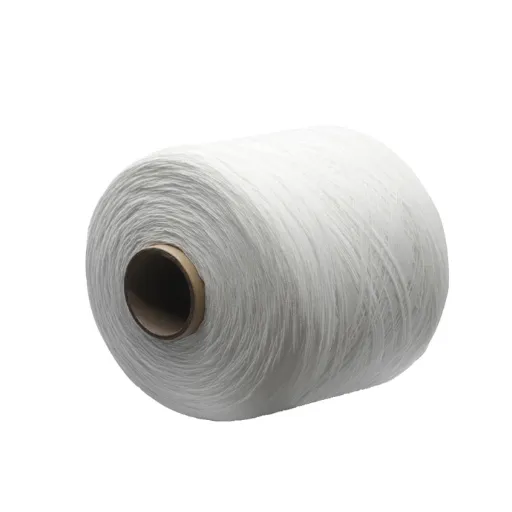
Continuous development in the manufacture of covered elastic yarn is focused on making the production process more effective, environmentally sound, and of high quality. The introduction of computerization and faster operating machines facilitates the enhancement of the factors affecting the yarn tension and the degree of its coverage. Encouragement is highly promoted for eco-mode operations, such as raw material recycling and energy conservation, due to the benefits they bring to the environment. Furthermore, with advancements in polymer technology, elastic cores have become even sturdier and longer-lasting, as well as improved coating systems that enhance the pliability and properties of the yarn. All these improvements make covered elastic yarn compliant with the increasing application needs in various sectors.
Technological Advancements: Smart Textiles and More
The evolution of intelligent fabrics has extended due to the integration of technologically enhanced fabrics with functional improvements. Bright garments incorporate functions that enable the monitoring of health status, heat modulation, connectivity with electronic gadgets covered with elastic yarn, among many other aspects, in one garment. For instance, sensorized and health-oriented garments, as well as protective textiles that can respond to environmental changes, are clear examples of such fabrics. Such utilities, especially in the health, sports, and fashion sectors, have become increasingly popular, enhancing the quality of life and demonstrating how innovative materials can be successfully incorporated. Together with nanotechnology, these new materials technologies and actions are increasing the scope in conditions where garments are made, which improves clothing thermo-regulation and functionality within covered elastic yarn.
Sustainability Trends in Yarn Production
The consumption behaviors related to clothes are burdening the need for recycling in the industry, therefore forcing some to think of ways to improve this. This issue has arisen in several practices that focus on environmental degradation within the textile industry. One of the investors in this trend is recycling yarn waste as well as paying great attention to recycled plastics knitting yarn, considering polyester, rayon, and others. Knitting yarns are made to extend the life of raw materials and reduce waste. Further, the resources used are optimal due to the introduction of more advanced processes, such as low-temperature technologies and waterless ones. There is also an increasing demand for organic fibers and biodegradable yarns, which serve as interventions for those consumers who are keen on environmental conservation and do not want to produce polluting artifacts. Together with innovations in the industry, such as machine optimization and the modernization of techniques, these trends are enhancing the textile industry. In these areas of manufacturing, covered elastic yarn is not a thing of the past and will champion a green design.
Selecting the Right Covered Elastic Yarn
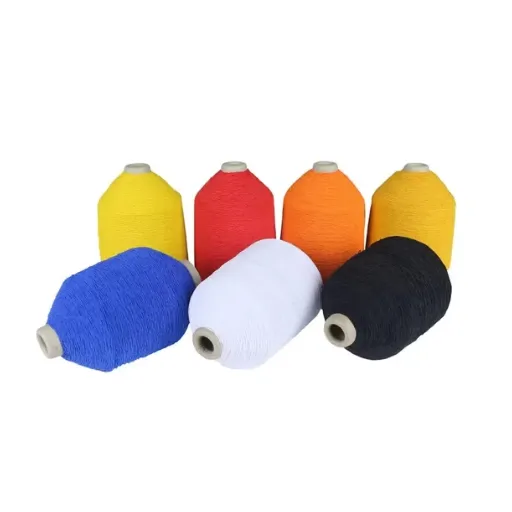
When deciding to purchase a covered elastic yarn, one must consider the specific needs of the projects for which it will be used. Look at it from the perspective of the elasticity required, strength, and all the wear-and-tear aspects that may come into play. When making garments, considerations such as comfort in use and how quickly one regains their shape should be paramount, provided such materials allow for it. Whereas in their industrial designs, such as for motors, attention is focused on how easily one can browse through any difficulties and how strong the lenient policies are. Also, ensure that the various components are compatible within the design and pose no risk of causing issues such as shrinkage or deformation. Yarns have to come from the best manufacturers in the market.
Factors to Consider When Choosing Elastic Yarn
- Measuring the elasticity of the course, which would be beneficial for both garment and industrial applications, as well as assessing the recovery characteristics.
- Examining the endurance and tensile strength. These two factors are crucial to ensure that the material doesn’t wear out and that it retains its shape.
- Protecting the design from compound breakdown, including deformation or shrinkage caused by other materials.
- The importance of reputable suppliers for these components is emphasized, ensuring that they are of the highest quality available.
Overcoming Common Challenges in Yarn Selection
Most people who knit or crochet share a common challenge when it comes to choosing yarn – deciding between appearance and practicality. For example, choosing yarn with a rich color, an appealing feel, and the proper strength is even more challenging. Again, it may be difficult to determine which yarn is suitable for which location; some yarns, like wool, could be perfect due to their warmth, but are very ill-suited for hot and humid weather. Besides, there is a constant pressure to achieve value for money without compromising on quality, even in instances where such compromises may be necessary. Being aware of current developments in the yarn industry, such as biodegradable and enhanced plastic mix yarns, will lead to better choices when selecting yarns. Apart from various elements such as aspects, trends, or features of materials utilized by consumers globally, making a proper yarn choice is covered by elastic yarn.
Reference Sources
Below are five practical and trustworthy academic sources that regard ‘covered elastic yarn’ in their content, which can help to provide proof of this article’s authenticity:
- Structure and Performance of Elastic Core-Spun Yarn
Published in the Journal of Textile Institute, available in SAGE Journals. - Mechanical Properties of Covered Yarn
Accessed from an academic platform specifically for scientific works, J-STAGE. - Elastic High-Performance Covered Yarn: Fabrication, Characterization, and Application
Published in the Journal of Textile Innovations, a peer-reviewed publication. - A Novel Elastic Conductive Yarn for Smart Textile Applications
Available on the Wiley Online Library, in the journal of Advanced Engineering Materials. - New Feeding Mechanism to Enhance the Properties of Wrapped Elastic Composite Yarn
Published in the multidisciplinary journal Heliyon, which is an openly accessible journal.
Frequently Asked Questions (FAQs)
What is covered elastic yarn?
Covered elastic yarn is a type of composite yarn formed by wrapping an elastic core yarn with one or more outer fibers. This construction enhances both elasticity and durability, making it suitable for a variety of applications, especially in elastic fabrics used in clothing and sports equipment.
How is elastic yarn produced?
The production of covered elastic yarn involves using high-pressure compressed air to wrap the outer fiber around the elastic core. This process can be accomplished using specialized nozzles to ensure consistent and even coverage, which is crucial for achieving the desired yarn quality and performance.
What are the advantages of using spandex-covered yarn?
Spandex-covered yarn offers several advantages, including high elongation, excellent recovery properties, and improved abrasion resistance. These characteristics make it widely used in activewear and other elastic fabrics where comfort and durability are essential.
What is the difference between single-covered and double-covered yarn?
Single-covered yarn is formed by wrapping one layer of outer fiber around the core yarn, while double-covered yarn consists of two layers of wrapping. The choice between the two depends on the desired elasticity, softness, and overall fabric performance.
What specifications should be considered when selecting covered elastic yarn?
When selecting covered elastic yarn, essential specifications to consider include the ratio of spandex to outer fiber, the type of outer fiber filament used, and the yarn’s abrasion resistance and durability. These parameters affect the yarn’s performance in specific applications.
Can covered elastic yarn be dyed?
Yes, covered elastic yarn can be dyed. However, the dyeing process may vary depending on the type of outer fiber used. It’s essential to choose dyes that are compatible with both the outer fiber and the core material to achieve the desired color without compromising the yarn’s elasticity.
What are some typical applications of covered elastic yarn?
Covered elastic yarn is widely used in various applications, including the production of elastic fabrics for apparel, sportswear, and industrial fabrics. Its unique properties make it ideal for products requiring stretch and recovery, such as waistbands, cuffs, and other fitted elements.
How does the twist in covered elastic yarn affect its performance?
The twist in covered elastic yarn enhances the cohesion between the outer fibers and the core yarn, improving the overall integrity of the yarn. A proper twist can also contribute to the yarn’s pilling resistance and help maintain its shape during use.
What are the disadvantages of using covered elastic yarn?
While covered elastic yarn has many benefits, it also has some disadvantages, such as potential creep performance issues over time. Additionally, specific yarns may require sizing during warp to maintain their structural integrity during the weaving process.








